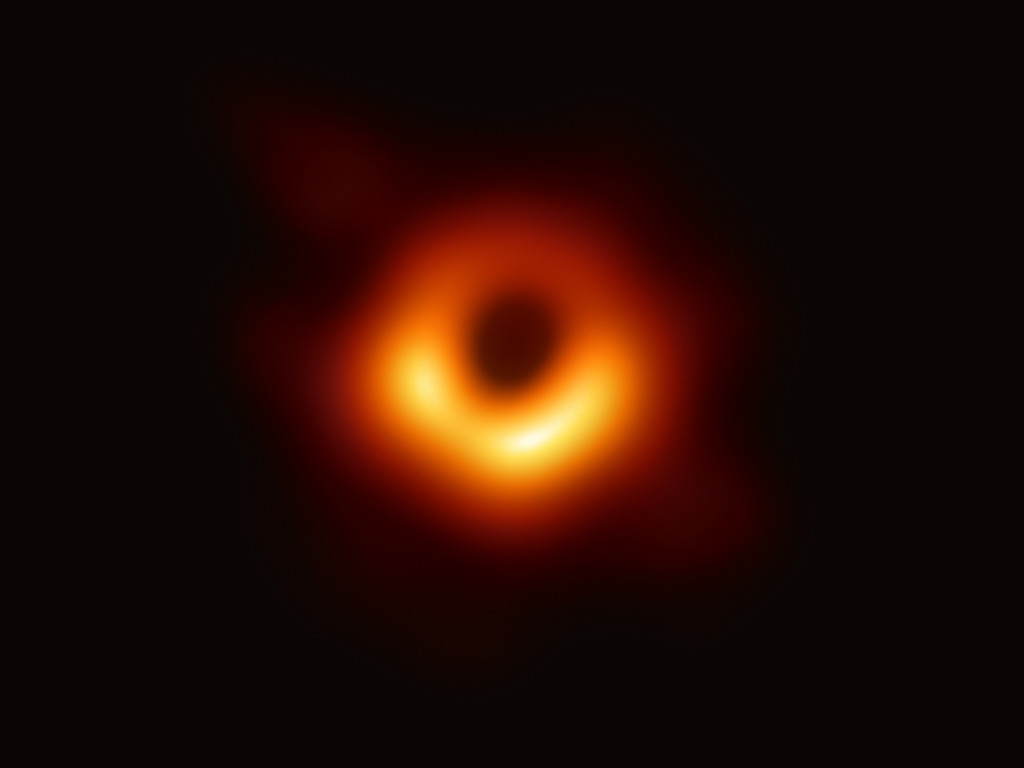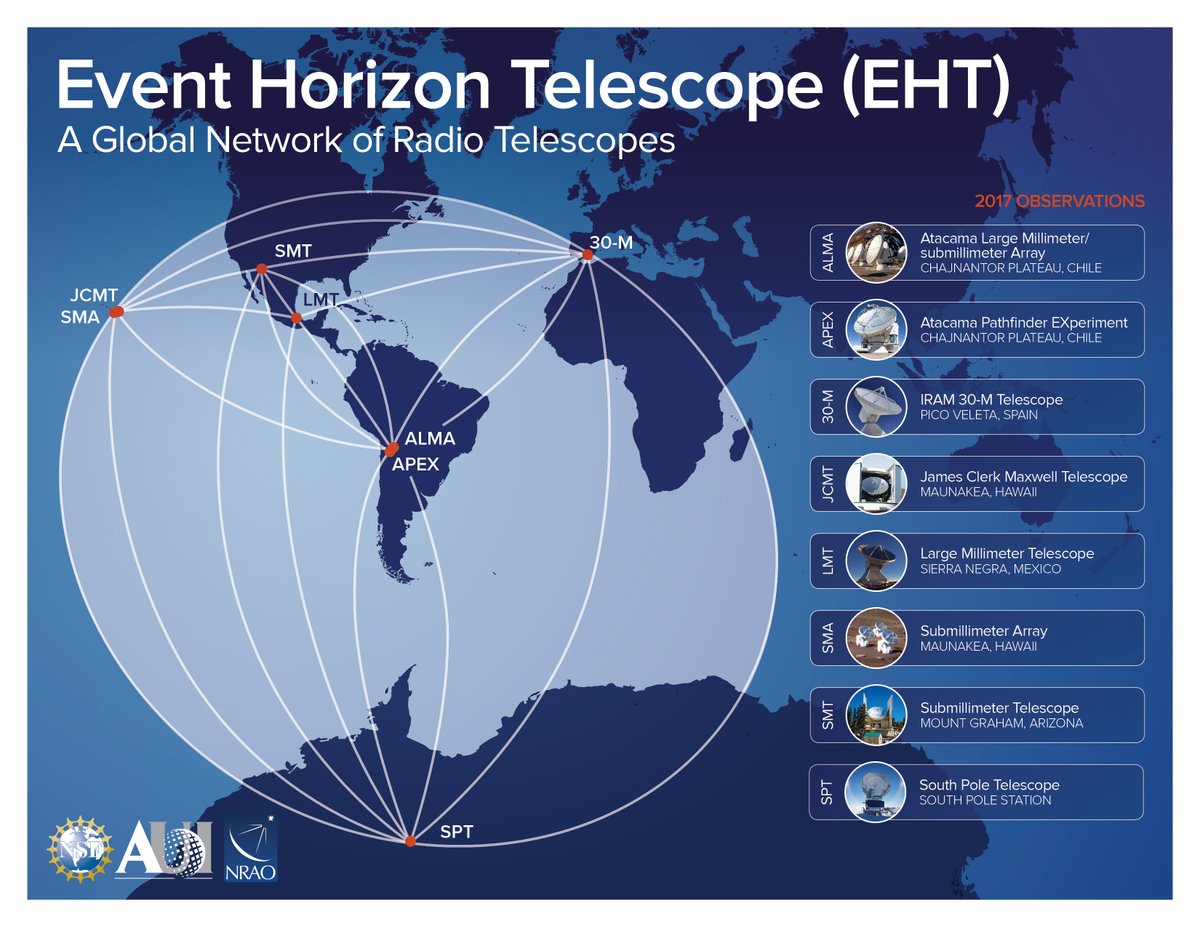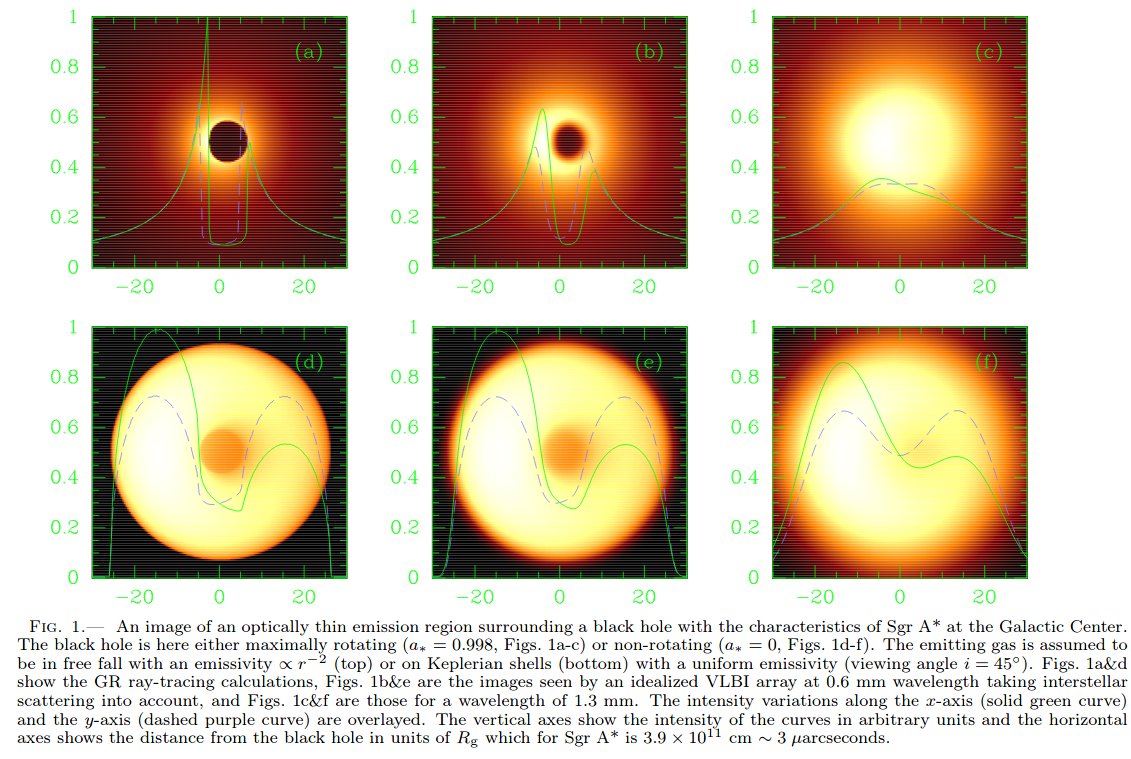Let's unwrap another question we often get about the @ehtelescope 's #EHTblackhole image: Why doesn't the picture look like the black hole simulation in the movie Interstellar? Let's digest the differences one by one.
1/7
cr. EHT/Paramount Pictures

1/7
cr. EHT/Paramount Pictures


The streak across the Interstellar 📸 is nowhere to be seen in ours. We are looking at the #M87blackhole almost 'straight down the barrel', and in Interstellar we look at it from the side and see the disk of matter, as shown here!
2/7
cr. @jordydavelaar @thomasbronzwaer Z. Younsi
2/7
cr. @jordydavelaar @thomasbronzwaer Z. Younsi
Our #EHTblackhole 📸 is also not fully symmetrical. It is brighter on the bottom from its slight inclination! The radiating gas is moving very fast as it orbits the BH, so it appears brighter as it moves toward us, and dimmer when it moves away: this is the Doppler effect!
3/7
3/7

In Interstellar, they chose to remove the Doppler effect because the contrast of the visualization was already too high to distinguish any brightening with the human eye
4/7
cr. K. Thorne to Gizmodo/Paramount Pictures
4/7
cr. K. Thorne to Gizmodo/Paramount Pictures

Recently @NASA made a visualization of what the Interstellar black hole would look like if the contrast was reduced and the Doppler effect was restored: brighter on the left, dimmer on the right!
5/7
cr. NASA’s Goddard Space Flight Center/Jeremy Schnittman
5/7
cr. NASA’s Goddard Space Flight Center/Jeremy Schnittman
Let's go back to this stunning visualization! The matter around the #M87blackhole falls in a puffy haze, not a pancake disk like Interstellar. This is due to the feeding properties of our supermassive BH, it doesn't accrete much!
6/7
cr. @jordydavelaar @thomasbronzwaer Z. Younsi
6/7
cr. @jordydavelaar @thomasbronzwaer Z. Younsi
I'll end this thread with the first computer simulation of a black hole accretion disk ever made, the results of which were hand-painted point-by-point by Jean-Pierre Luminet in 1979! Isn't it beautiful? And very familiar-looking!
7/7
cr. J.-P. Luminet/A&A
7/7
cr. J.-P. Luminet/A&A

• • •
Missing some Tweet in this thread? You can try to
force a refresh







